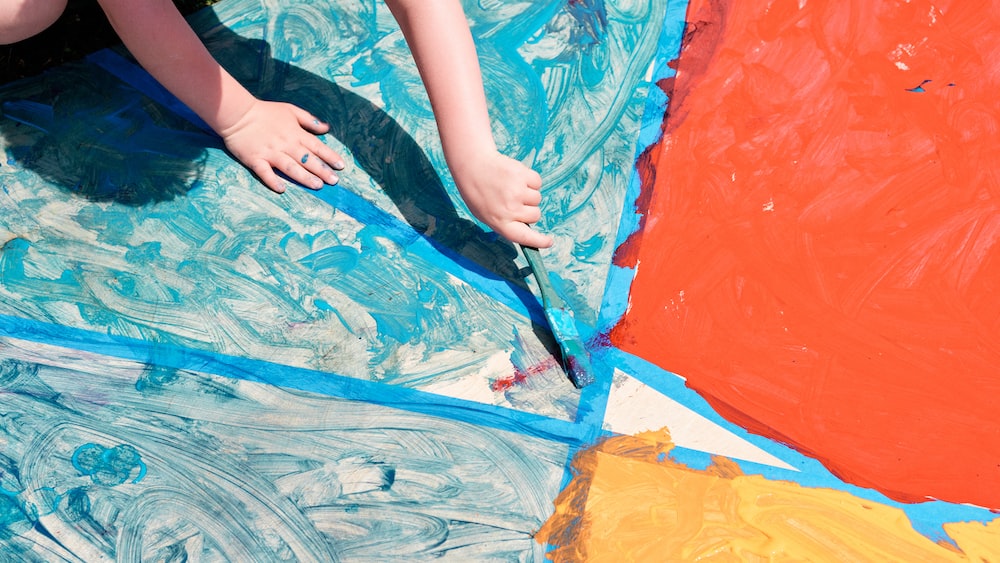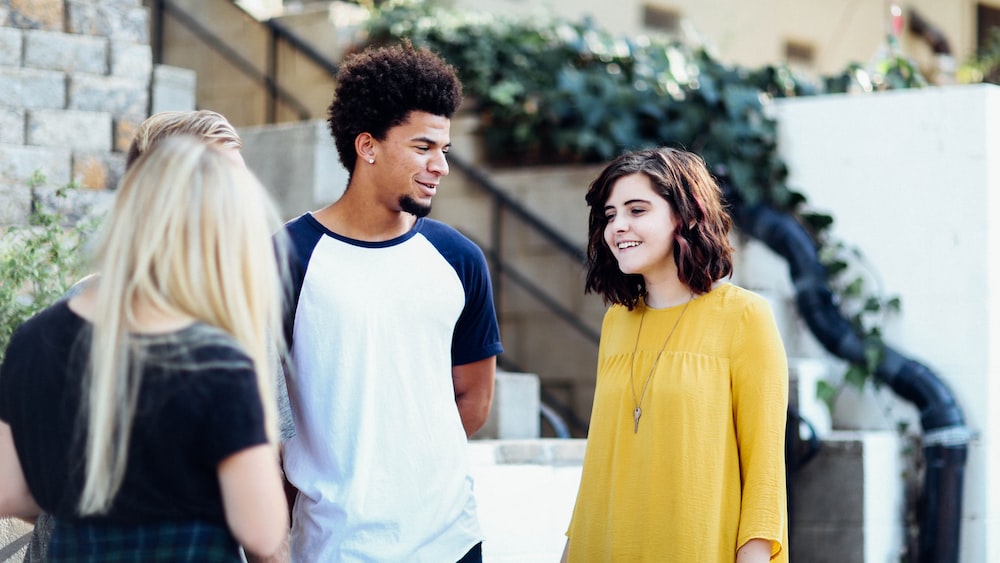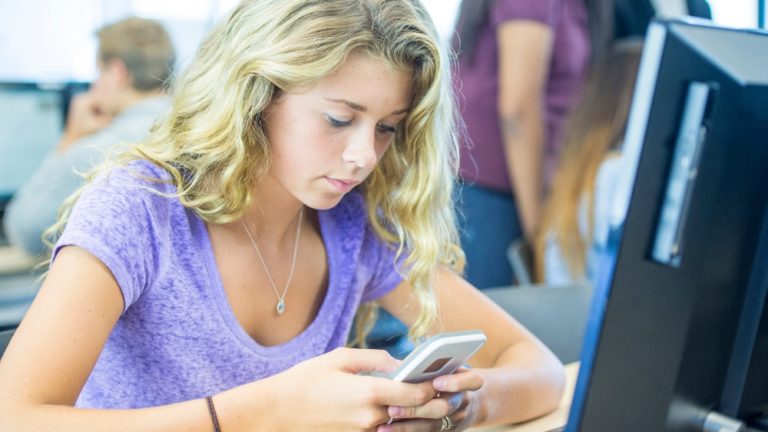21 Mindfulness Activities For High School Students: Breathe, Meditate, And Relax
Welcome to the world of mindfulness! As a high school student, you have a lot on your plate – from juggling classes, homework, sports, and social life, it’s no wonder that stress levels can skyrocket. So, how do you stay centered, focused, and relaxed in the midst of all that chaos? The answer is mindfulness. In this article, we’ll discuss 21 mindfulness activities specifically designed for high school students to help you breathe, meditate, and relax.
But first, let’s understand what mindfulness is all about. In simple terms, mindfulness is the practice of being fully present and aware of our thoughts, emotions, bodily sensations, and surroundings. It’s about learning to focus on the present moment without judgment. Research has shown that mindfulness can have a wide range of benefits, including improved mental health, enhanced academic performance, and reduced stress.
So, are you ready to embark on this exciting journey toward a more mindful and balanced life? Let’s dive into these transformative mindfulness activities that will help you navigate the highs and lows of high school with grace and poise.
Individual Mindfulness Activities for High School Students
To start our exploration of mindfulness, let’s focus on individual activities. These practices can be easily integrated into your daily routine, providing you with valuable tools to manage stress, improve focus, and foster self-awareness.
1. Journaling for Self-Reflection
Journaling is a powerful mindfulness tool that can help you gain insight into your thoughts and emotions. By putting pen to paper, you’re allowing yourself a safe space to explore, process, and release any feelings or experiences that may be weighing you down.
To begin, find a quiet and comfortable space where you can write without distractions. Set a timer for 10-15 minutes and simply start writing. Let your thoughts flow freely, without worrying about grammar or structure. You can write about your day, your emotions, or any particular challenges you’re facing. The key is to be honest and open with yourself.
At the end of your journaling session, take a moment to reflect on what you’ve written. Are there any patterns or themes that stand out? Did you discover anything new about yourself? Remember, journaling is a journey of self-discovery, so be patient and kind to yourself as you uncover the inner workings of your mind.
Journaling is a powerful mindfulness tool to gain insight into thoughts and emotions, allowing a safe space to explore, process, and release any feelings or experiences that may be weighing you down.
2. Practicing Mindful Breathing Techniques
Mindful breathing is a fundamental aspect of mindfulness practice. By focusing on your breath, you anchor your awareness in the present moment, allowing your mind to become calmer and more focused. Plus, deep breathing has been proven to reduce stress and anxiety.
Here are two simple mindful breathing techniques you can try:
- The 4-7-8 Technique: Inhale deeply through your nose for a count of 4, hold your breath for a count of 7, and then exhale slowly through your mouth for a count of 8. Repeat this cycle 4 times.
- Box Breathing: Inhale through your nose for a count of 4, hold your breath for a count of 4, exhale through your mouth for a count of 4, and pause for a count of 4 before inhaling again. Repeat this cycle 4 times.
Practice these techniques daily, or whenever you feel overwhelmed or stressed. With time, you’ll notice a greater sense of calm and clarity in your daily life.
3. Engaging in Creative Coloring or Drawing
Artistic expression is a fun and effective way to practice mindfulness. Coloring or drawing allows you to tap into your creative side while focusing your attention on the present moment.
Choose a coloring book, a blank sheet of paper, or even a doodle app on your phone or tablet. Begin coloring or drawing without any expectations or judgments. Focus on the colors, patterns, and textures, allowing your mind to become fully immersed in the creative process.

4. Exploring Body Scan Meditation
Body scan meditation is a mindfulness practice that involves systematically focusing your attention on different parts of your body. This technique helps you develop a deeper awareness of your physical sensations and promotes relaxation.
To begin, find a comfortable position, either sitting or lying down. Close your eyes and take a few deep breaths. Starting at the top of your head, slowly direct your attention to each part of your body, noticing any sensations, tension, or discomfort. Continue moving your focus downward, eventually reaching your toes.
As you practice body scan meditation, remember to be patient and gentle with yourself. It’s normal for your mind to wander – simply acknowledge any distractions and gently bring your focus back to your body.
5. Incorporating Gratitude Lists
Cultivating gratitude is an essential component of mindfulness. By acknowledging and appreciating the positive aspects of your life, you create a more optimistic and resilient mindset.
Each day, take a few minutes to write down three things you’re grateful for. These can be small, everyday occurrences or more significant events. The key is to actively seek out and recognize the goodness in your life.
6. Trying Mindful Walking
Mindful walking is a form of meditation that combines movement with mindfulness. By focusing on the sensations of your body as you walk, you become more present and aware of your surroundings.
Choose a quiet and peaceful environment for your mindful walk, such as a park or nature trail. Begin walking at a comfortable pace, paying attention to the feeling of your feet hitting the ground, the rhythm of your breath, and the sensation of your muscles contracting and relaxing.
As you walk, also take note of the sights, sounds, and smells around you. If your mind wanders, gently guide it back to the present moment and the experience of walking. Practice mindful walking for 10-20 minutes, or as long as you feel comfortable.
7. Listening to Music with Intention
Music can be an incredibly powerful tool for mindfulness. By actively listening to music, you can immerse yourself in the present moment and experience a deeper connection to your emotions.

Select a piece of music that resonates with you or evokes a specific emotion. Close your eyes and focus on the melody, rhythm, and lyrics (if applicable). Allow yourself to fully experience the music, noticing any emotions or memories that arise.
8. Experimenting with Yoga and Stretching
Yoga is an ancient practice that combines physical movement, breathwork, and mindfulness. By engaging in yoga and stretching exercises, you can improve your flexibility, strength, and mental focus.
Begin by exploring a few basic yoga poses, such as downward-facing dog, warrior, and tree pose. Focus on your breath as you move through each pose, maintaining a steady and rhythmic breathing pattern.
As you practice yoga, pay attention to the sensations in your body, the alignment of your posture, and the connection between your breath and movement. With time, you’ll likely notice increased physical and mental well-being as a result of your yoga practice.
Engaging in yoga and stretching exercises can improve flexibility, strength, and mental focus by combining physical movement, breathwork, and mindfulness.
9. Utilizing Guided Meditation Apps
In today’s digital age, guided meditation apps have become a popular and convenient way to practice mindfulness. These apps offer high school students a variety of meditation techniques and guided sessions, designed to help them relax, focus, and develop their mindfulness skills. Some popular meditation apps include Headspace, Calm, Insight Timer, and Smiling Mind. Many of these apps offer free content, making it an accessible option for students on a budget.
Additionally, these apps often have features that allow users to track their progress and set reminders to practice daily. This way, students can establish a consistent meditation routine and experience the cumulative benefits of mindfulness over time. So, why not give it a try? Embrace the power of technology and explore guided meditation apps to enhance your mindfulness journey.
10. Focusing on One Task at a Time
With the constant distractions and multitasking that modern life demands, it can be challenging to concentrate on a single task. However, research shows that focusing on one task at a time can significantly improve productivity and reduce stress. So, how can high school students practice this skill? Here are a few tips:
- Start by setting a specific goal for each task, and break it into smaller, manageable steps.
- Eliminate distractions, such as turning off notifications on your phone or computer.
- Set a time limit for each task, and take short breaks in between to recharge.
By incorporating these strategies, high school students can develop their ability to focus and improve their overall mindfulness.
Group Mindfulness Activities for High School Students
Engaging in group mindfulness activities can be a fantastic way to foster connection and support among high school students. By sharing their experiences and learning from one another, students can develop essential life skills and enhance their overall well-being. Let’s dive into some of the most effective group mindfulness activities for high school students!

11. Participating in Mindful Group Discussions
Mindful group discussions provide students with the opportunity to share their thoughts, feelings, and experiences in a supportive and non-judgmental environment. These discussions can be centered around specific topics, such as stress management, emotions, or self-care. To facilitate a mindful group discussion, consider the following tips:
- Create a safe, comfortable space where everyone feels encouraged to share.
- Establish ground rules to ensure respectful and inclusive communication.
- Use open-ended questions to spark thoughtful conversation and reflection.
12. Collaborating on Art Projects
Art is a powerful medium for self-expression and can be an effective tool for practicing mindfulness. Collaborative art projects allow students to explore their creativity while working together towards a common goal. Some examples of group art projects include:
- Creating a mural or collage that represents the group’s collective experiences or emotions.
- Designing a “gratitude tree” where each student adds a leaf with something they are grateful for.
- Constructing a sculpture or installation using found objects or recycled materials.
13. Engaging in Team-Building Exercises
Team-building exercises are a great way to foster camaraderie, collaboration, and mindfulness among high school students. By participating in activities that require teamwork and communication, students can develop essential life skills and create lasting connections with their peers. Some examples of mindful team-building exercises include:
- Trust exercises, such as the classic “trust fall” or guiding a blindfolded partner through an obstacle course.
- Problem-solving challenges, like escape rooms or group puzzles.
- Cooperative games, such as “human knot” or “pass the pulse.”
14. Practicing Mindful Communication Skills
Effective communication is an essential aspect of mindfulness, as it enables us to express our thoughts and feelings clearly and empathetically. High school students can practice mindful communication skills by participating in activities that encourage active listening, empathy, and non-judgment. Some examples of mindful communication exercises include:
- Role-playing scenarios that require students to navigate challenging conversations or conflicts.
- “Active listening” exercises, where one student shares a story or experience, and their partner must listen attentively and ask clarifying questions.
- “I-statements” practice, where students learn to express their feelings and needs without blaming or criticizing others.
By engaging in these activities, high school students can develop their communication skills and foster healthier, more mindful relationships with their peers.
15. Exploring Group Meditation Sessions
Group meditation sessions can be a powerful way for high school students to experience the benefits of mindfulness collectively. These sessions provide a supportive environment in which students can learn and practice various meditation techniques, such as breath awareness, body scans, or loving-kindness meditation.
To facilitate a successful group meditation session, consider the following tips:
- Set the tone by creating a calm, quiet space with comfortable seating and dim lighting.
- Begin with a brief introduction to the chosen meditation technique, explaining its purpose and benefits.
- Guide the students through the meditation, using clear, gentle instructions and maintaining a slow, steady pace.
After the meditation, encourage students to share their experiences and insights with the group. This can help build a sense of community and support among participants, fostering deeper connections and personal growth.
16. Organizing Nature Walks or Outdoor Activities
Spending time in nature has been shown to have numerous benefits for our mental and physical well-being. Organizing nature walks or outdoor activities can provide high school students with the opportunity to practice mindfulness while enjoying the beauty and tranquility of the natural world. Some examples of mindful outdoor activities include:
- Guided nature walks, where students focus on the sights, sounds, and sensations of their surroundings.
- Outdoor yoga or tai chi classes, which combine physical movement with mindfulness and breath awareness.
- “Sit spots,” where students find a quiet place in nature to sit and observe their environment for a set period of time.
Organizing outdoor activities that involve mindfulness practices, such as guided nature walks, yoga or tai chi classes, or sit spots, can provide high school students with numerous benefits for their mental and physical well-being.
17. Encouraging Peer Support and Sharing
Fostering a culture of peer support and sharing among high school students can significantly enhance their mindfulness journey. By creating opportunities for students to connect with and learn from one another, they can build strong support networks and develop a greater sense of empathy and understanding. Some ways to encourage peer support and sharing include:
- Establishing a “buddy system” where students pair up to support and motivate each other in their mindfulness practice.
- Creating a safe space where students can share their personal stories, challenges, and successes related to mindfulness and mental health.
- Organizing regular “check-ins” or group meetings where students can discuss their progress, share resources, and offer encouragement to one another.
18. Implementing Mindfulness in Sports and Physical Education
Incorporating mindfulness into sports and physical education can significantly enhance the overall experience for high school students. Mindfulness techniques can help students to stay focused, build resilience, and develop a positive attitude towards physical activity.
One way to implement mindfulness in sports is by introducing visualization exercises before games or practices. Encourage students to imagine themselves performing at their best, feeling confident, and enjoying the activity. This can help them to stay present, reduce stress, and improve their performance.

19. Hosting Mindful Movie or Book Clubs
Creating a mindful movie or book club can be a fun way for high school students to engage in mindfulness activities as a group. By selecting movies or books that have themes related to mindfulness, self-awareness, or emotional intelligence, students can explore these concepts in a relaxed and enjoyable setting.
During movie or book club meetings, encourage students to engage in mindful discussions about the themes, characters, and their personal experiences related to the content. This can help them to develop a deeper understanding of the material and build connections with their peers.
To make the experience even more impactful, consider incorporating mindful practices into the club meetings, such as starting with a short meditation or a moment of silence to help participants focus and be present in the discussion.
20. Organizing School-Wide Mindfulness Events
Organizing school-wide mindfulness events can help to create a sense of unity and shared purpose among students and staff. These events can range from mindfulness workshops led by experts, to school-wide meditation sessions, or even a mindfulness-themed festival.
These events can serve as an opportunity to introduce new mindfulness practices and techniques, as well as to reinforce the importance of self-care and mental well-being within the school community.
21. Creating a Mindful Classroom Environment
Creating a mindful classroom environment is an essential aspect of fostering mindfulness among high school students. Incorporating mindfulness into the classroom space can help students feel more relaxed, focused, and open to learning.
Some strategies for creating a mindful environment include:
- Designating a quiet corner or meditation space where students can go to relax, reflect, or practice mindfulness techniques.
- Encouraging the use of calming visuals, such as nature scenes or soothing colors, to promote a sense of tranquility in the classroom.
- Introducing mindful breaks during class time, allowing students to pause, take a few deep breaths, and refocus their attention.
Incorporating mindfulness into the classroom can create a relaxed and focused environment for high school students through strategies such as designating a quiet corner, using calming visuals, and introducing mindful breaks.
FAQs
1. How can mindfulness benefit high school students?
Mindfulness can benefit high school students in various ways, such as reducing stress and anxiety, improving focus and concentration, enhancing emotional regulation, and fostering resilience. Practicing mindfulness can also help students develop a greater sense of self-awareness, leading to better decision-making and overall well-being.
2. How can teachers incorporate mindfulness activities into their curriculum?
Teachers can incorporate mindfulness activities into their curriculum by introducing short mindfulness exercises at the beginning or end of class, incorporating mindful practices into existing lessons, or dedicating specific class time to explore mindfulness techniques and concepts.
3. What are some resources for learning more about mindfulness for teens?
Some resources for learning more about mindfulness for teens include books, websites, and apps specifically designed for adolescents. These resources often provide age-appropriate mindfulness exercises, guided meditations, and educational materials to help teens develop their mindfulness practice.
4. How can parents support their high school students in practicing mindfulness?
Parents can support their high school students in practicing mindfulness by encouraging open communication about their experiences, providing access to mindfulness resources, and even modeling mindfulness practices themselves. Participating in mindfulness activities together as a family can also help to create a supportive and nurturing environment for growth and self-discovery.
Conclusion
Mindfulness activities for high school students can have numerous benefits, from improved mental well-being to enhanced academic performance. By implementing individual and group mindfulness activities into the daily lives of high school students, we can help them develop valuable skills and habits that will serve them well throughout their lives.
Remember, it’s never too late to start practicing mindfulness, and even small changes can have a significant impact. So, why not give some of these activities a try and see the difference they can make in the lives of high school students? Together, we can create a more mindful, compassionate, and resilient generation.
I wish you the best! Fabian.
Share with your Friends:






